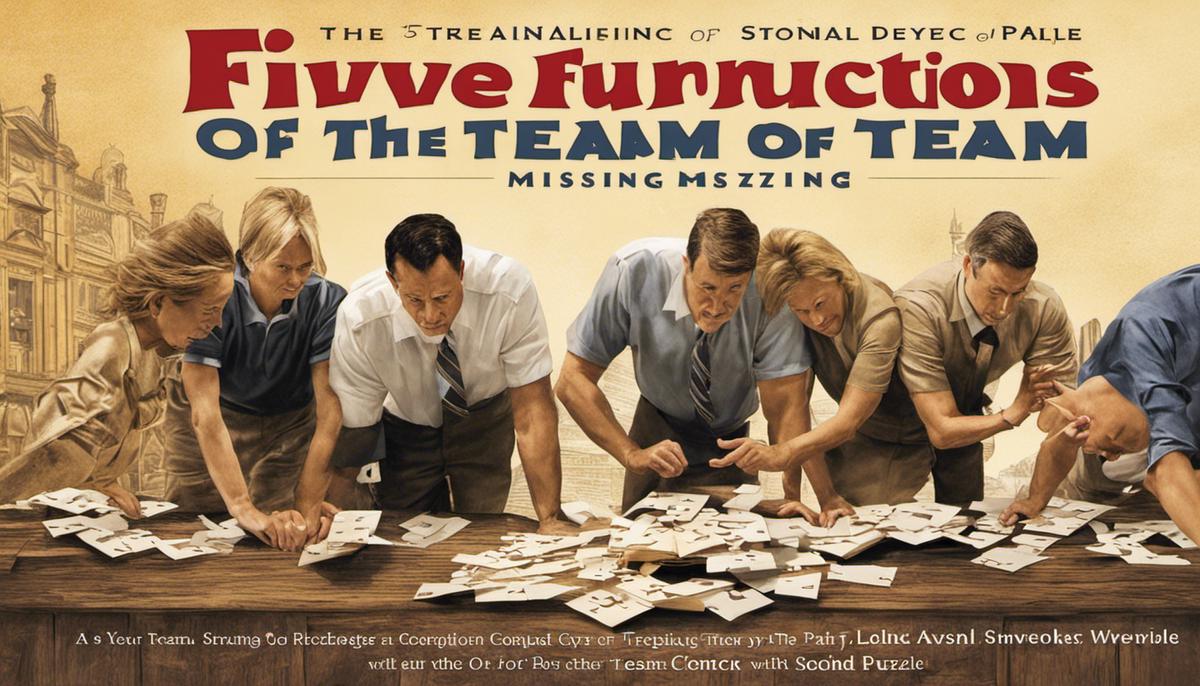Whether rising through the ranks, managing a team, or building a business from scratch, successful leadership requires a blend of unique skills, insights, and experiences. The quest to become an accomplished leader often begins with learning from those who have tread the path, translated their experiences, strategies, and philosophies into inspiring and educational works. Among the plethora of literature available on leadership and business, certain power-packed books stand out in their ability to shape thinking, evolve strategies, and catalyze both personal and organizational transformations. These books, namely `Start with Why` by Simon Sinek, `The Lean Startup` by Eric Ries, `Good to Great` by Jim Collins, and `The Five Dysfunctions of a Team` by Patrick Lencioni, each offer unique perspective towards leadership and business management.
Start with Why by Simon Sinek
Simon Sinek’s “Start with Why”
“Start with Why” is more than just another business book. It provides readers with a pathway to becoming transformative leaders in their respective fields. Arguing against the status quo, Sinek redefines the concept of leadership by revealing that the most influential leaders inspire trust, cooperation, and change by starting their decision-making process with ‘why’.
Focused on the ‘Golden Circle’
The philosophy presented is based on Sinek’s Golden Circle model; ‘why’, ‘how’, and ‘what’. These concentric circles, with ‘why’ at the core, encapsulates the idea that successful leaders or organizations always start by asking ‘why’ – identifying their purpose and belief that inspires them to do what they do.
Creating a Culture of Trust and Cooperation
“Start with Why” argues that leaders who encapsulate their ‘why’ in their actions can create a culture cognizant of the organization’s core purpose. The understanding of this core ‘why’ fosters trust and cooperation among team members, enabling them to work towards a shared vision. Ultimately, this catalyzes significant and positive change in the organizational dynamics, operational efficiency, and overall success.
Case Studies and Real-Life Examples
Sinek demonstrates the applicability and effectiveness of his philosophy through numerous case studies and real-life examples, such as the success of Apple Inc. under Steve Jobs’ leadership. These examples bridge the gap between theory and practice, making it easier for readers to understand and implement the ‘why’ philosophy in their own business or leadership scenarios.
More than Just Business Guidance
While the prime audience of “Start with Why” may be those in a leadership position or aspiring to be, Sinek’s philosophy goes beyond the sphere of business. It provides valuable advice to individuals seeking purpose and direction in their personal lives as well. Conclusively, it is a comprehensive guide that facilitates strategic thinking, innovation, inspiration, and lasting success.
Infusing Passion into Leadership
“Start with Why” takes leadership beyond the realm of logic and pragmatism; it embraces the importance of passion, belief, and purpose. As Sinek aptly puts it, “People don’t buy what you do; they buy why you do it.” This belief is central to the ‘why’ philosophy, forming the crux of why leaders need to focus on their intrinsic values and passions to inspire their followers genuinely.

The Lean Startup by Eric Ries
Innovation: Redefined by Eric Ries
“The Lean Startup” by Eric Ries is a trailblazing work that has transformed the way the business world thinks about startups and innovation. As opposed to the traditional understanding of a startup being a small, newly established business, Ries broadens this definition to encompass any organization aiming to create something novel amid hugely uncertain conditions.
At the core of Ries’ approach is the concept of validated learning – the process of discovering whether your business model assumptions are correct, through the building of a minimal viable product and gauging customers’ responses. This approach allows businesses to pivot – a change in strategy without change in vision – when initial assumptions are proven incorrect, encouraging leaders to constantly adapt their approach to flourish in an ever-evolving market.
Scientific Approach to Business Success
In times when innovation is a pressing necessity, Ries proposes a ‘scientific’ methodology to manage efficient startups. This Lean Startup method provides a framework for businesses to reliably and effectively tune their products closer to consumers’ needs, making wasteful practices and product flops less likely.
Key Takeaways from The Lean Startup
“The Lean Startup” isn’t just a business book. It’s a philosophy and methodology that powerfully applies to everything from next-generation digital products to traditional analog businesses. Leadership in this context requires the ability to adapt, learn from failures, and continuously seek improvement against macro-uncertainties. With a basis in lean manufacturing, Ries’ strategy also extends to creating a culture of innovation, offering both startup founders and leaders in established corporations a clear path for sustained growth, innovation, and business success.

Good to Great: Why Some Companies Make the Leap and Others Don’t by Jim Collins
“Good to Great: Why Some Companies Make the Leap and Others Don’t” by Jim Collins
is a must-read for those interested in understanding the intricacies of leadership and company management. While many books provide roadmaps to instant success, this one stands out because of its unique focus on how average companies can propel themselves to lasting greatness.
Essential Tenets of Success
Collins identifies three essential elements that facilitate the transformation from good to great: disciplined people, disciplined thought, and disciplined action. Companies, he argues, must adhere to these principles consistently, and their leaders must ensure that their teams are similarly committed and disciplined.
Unlike many books that focus on a single aspect like marketing or product design, “Good to Great” looks at persistent approaches across the entire business, arguing that stability and persistence are fundamental to sustainable success. Each tenet delves into management techniques, such as getting the right people on the team before deciding on direction and creating a culture of self-discipline.
A Book for Leaders
“Good to Great” targets readers at every level of an organization, but it’s especially valuable for those positioned to make substantial changes. Leaders can utilize these guiding principles to invigorate their teams, foster a culture of discipline and dedication, and set their companies on a path to greatness.
In an era where instant gratification and quick fixes are the norm, Collins makes a compelling argument for sustained effort and long-term focus. This thought-provoking read is bound to revolutionize your understanding of leadership and corporate success. It also emphasizes that true greatness is achievable for any company, regardless of its current state, as long as it commits to disciplined people, thought, and action.
In essence, the principles within “Good to Great” offer a versatile set of tools for growth, making it an indispensable resource in a leader’s library. Whether you’re an aspiring entrepreneur, a seasoned business owner, or a team lead hoping to make your mark, this book is sure to inspire, equip, and propel you toward lasting greatness.

The Five Dysfunctions of a Team by Patrick Lencioni
The Five Dysfunctions of a Team by Patrick Lencioni
provides a compelling look at the common obstacles faced by teams within organizations and how to overcome them. According to Lencioni, these hurdles often stem from five identifiable dysfunctions that inhibit the effectiveness and harmony of a team.
Absence of Trust
Not shying away from the hard truths of team dynamics, Lencioni exposes the first dysfunction as an absence of trust. He emphasizes the dire effects that a lack of transparency and vulnerability can have on team cohesion. However, Lencioni goes further than just identifying the problem; he provides insights on establishing trust, such as by allowing for vulnerability, promoting open communication, and consistently demonstrating reliability.
Fear of Conflict
The second dysfunction, fear of conflict, occurs when team members avoid disagreements in an attempt to maintain faux peace. Lencioni challenges this avoidance, arguing that conflict can be a beneficial, essential aspect of decision-making and problem-solving. He provides practical steps for managing and leveraging conflict, asserting that it can result in more robust ideas and solutions when guided productively.
Unwillingness to Commit
The unwillingness to commit, the third dysfunction, is addressed next in the book. Lencioni discusses the harmful impacts of ambiguity and indecisiveness, advocating for clarity and action. He provides strategies for leaders to encourage commitment and engagement amongst team members, such as by setting clear goals and deadlines, and showing decisiveness in leadership.
Avoidance of Accountability
Lencioni moves onto the fourth dysfunction, avoidance of accountability, analyzing why teams may shy away from holding one another accountable. He stresses the critical role of accountability in achieving common goals and provides tips on fostering a culture of responsibility and openness.
Inattention to Results
Finally, the fifth dysfunction, inattention to results, is explored in-depth. Lencioni explains how teams can lose sight of their collective goals and succumb to personal agendas or status-seeking behaviors. He presents solutions to refocus the team on their shared objectives, like setting clear expectations, celebrating group successes, and regularly reviewing progress towards goals.
Conclusion
In The Five Dysfunctions of a Team, Lencioni doesn’t just diagnose the problems; he provides a roadmap to building cohesive, effective teams. His powerful model and actionable steps are invaluable resources for those in leadership positions, offering fresh perspectives on the complexities of team dynamics. It is a must-read for anyone seeking to lead teams to their highest potential.

Cultivating exemplary leadership skills and implementing effective business strategies doesn’t happen overnight. It is an ongoing journey, a continuous learning process that is greatly enriched by the seasoned insights and strategies found in transformational books by leadership pundits. Rediscovering personal and organizational ‘why’ with Sinek, applying scientific principles to entrepreneurship with Ries, exploring the transition from good to great with Collins, and overcoming team dysfunctions with Lencioni can unlock new paradigms of business, leadership, and success. As professionals look to upskill their leadership acumen, the wisdom encapsulated in these books will illuminate their path, guiding them towards the achievement of their leadership objectives and business goals.
